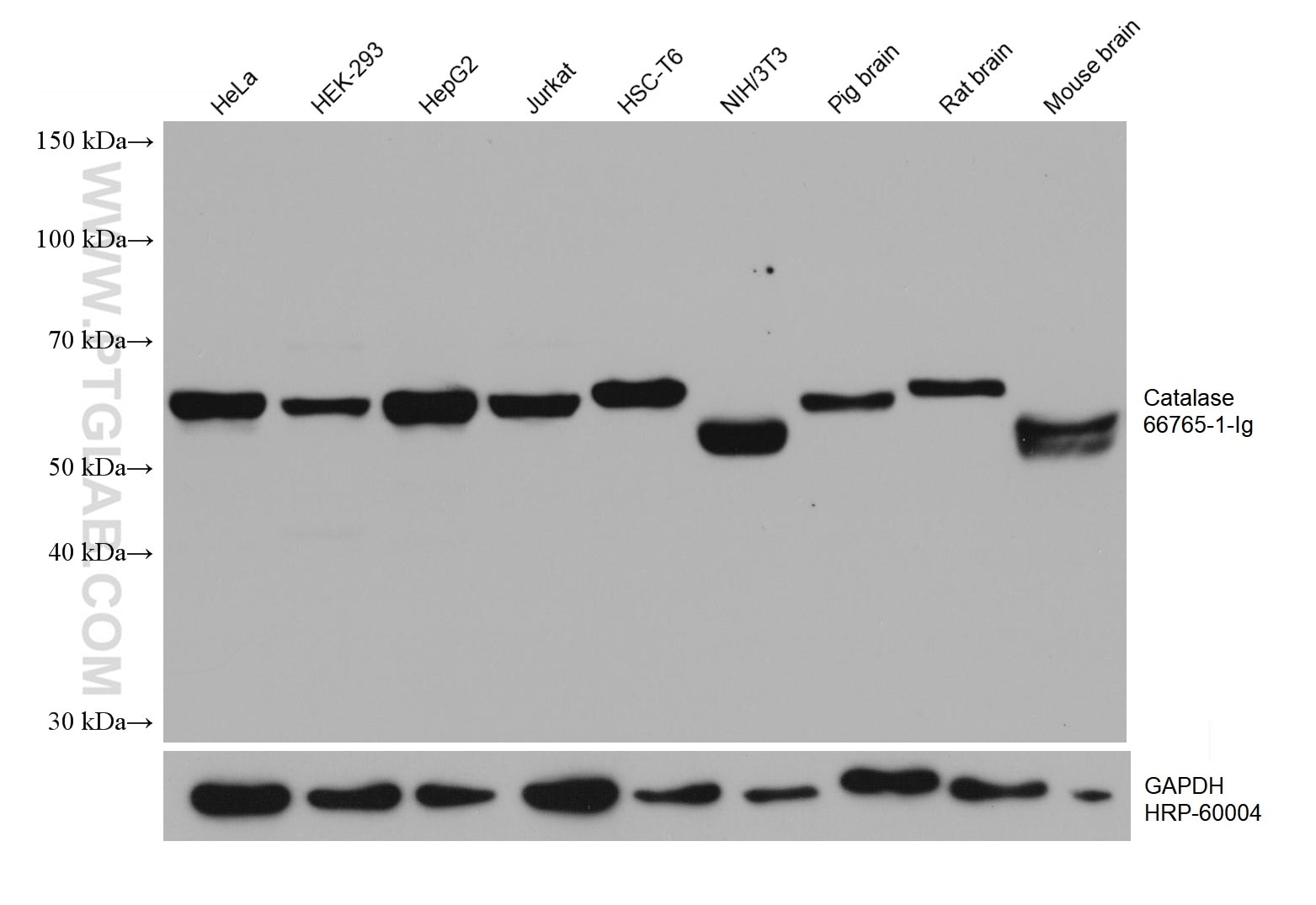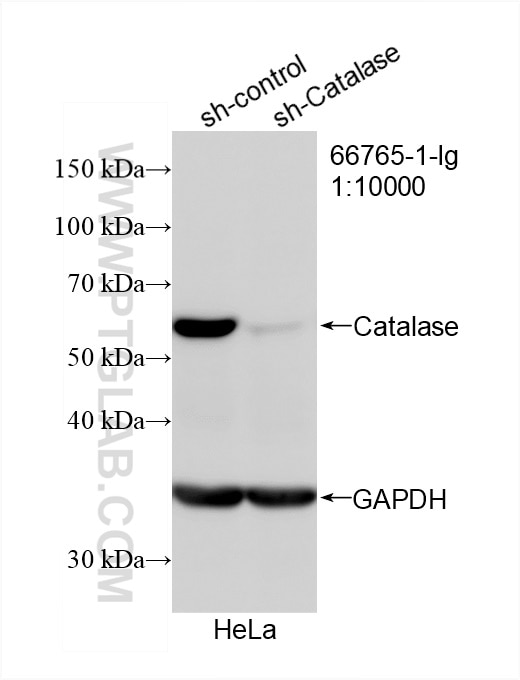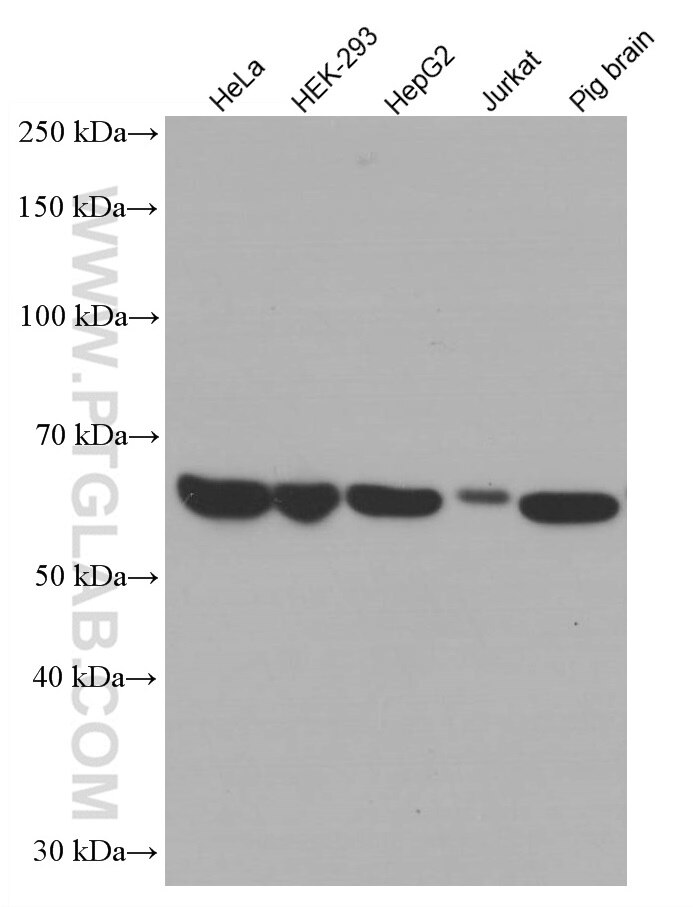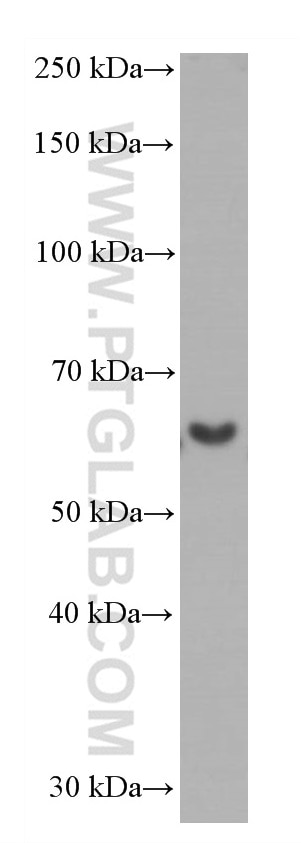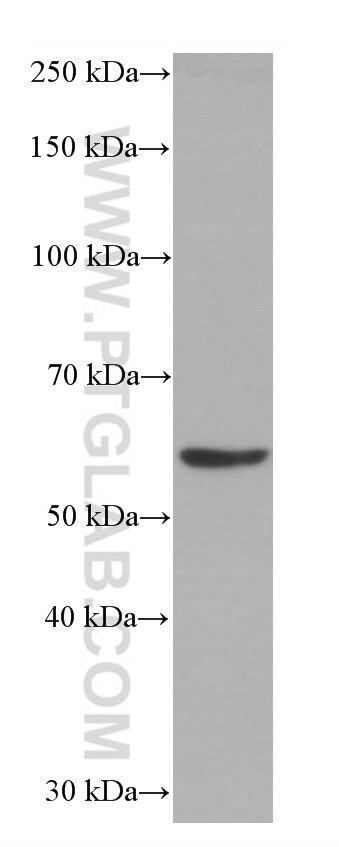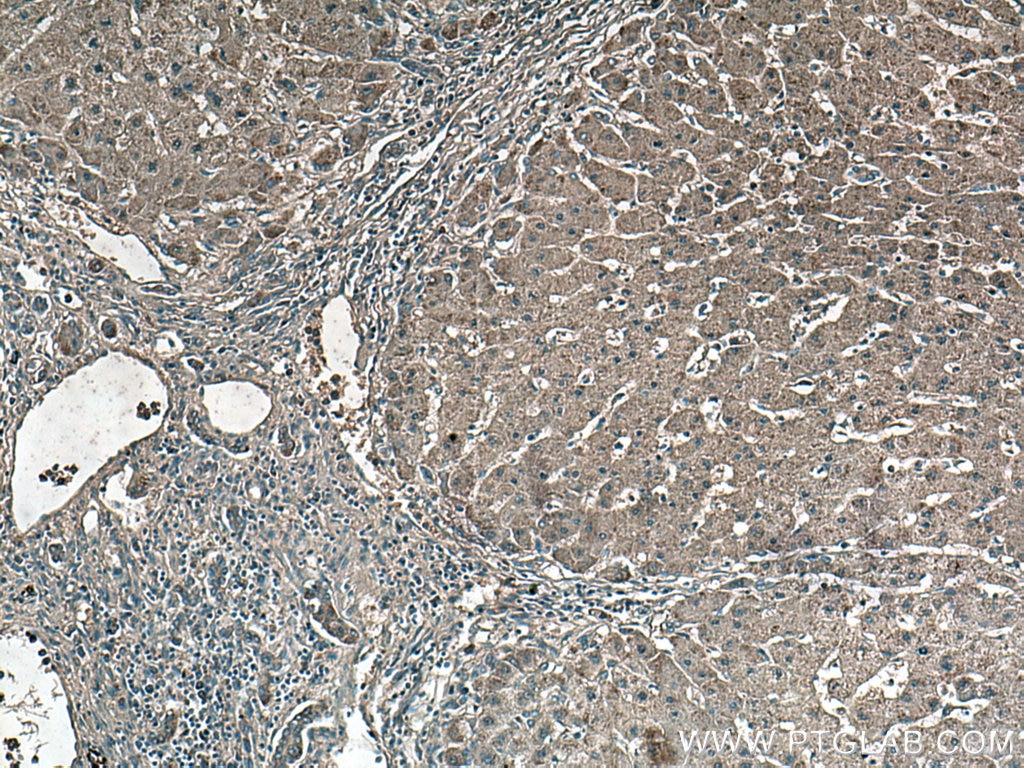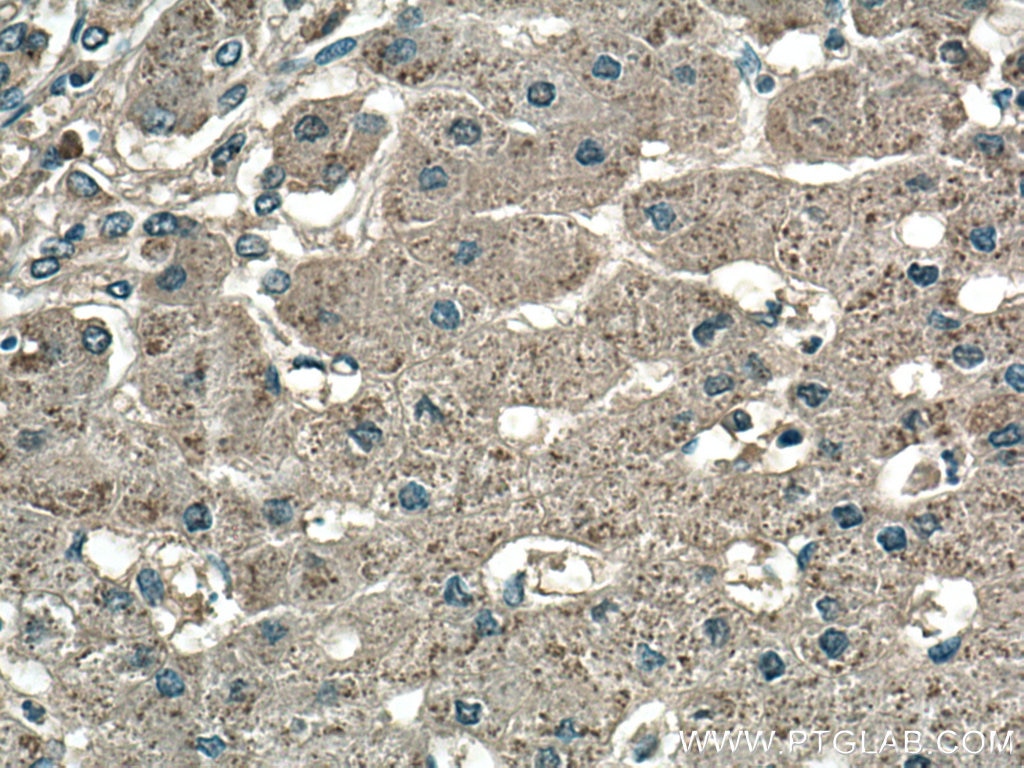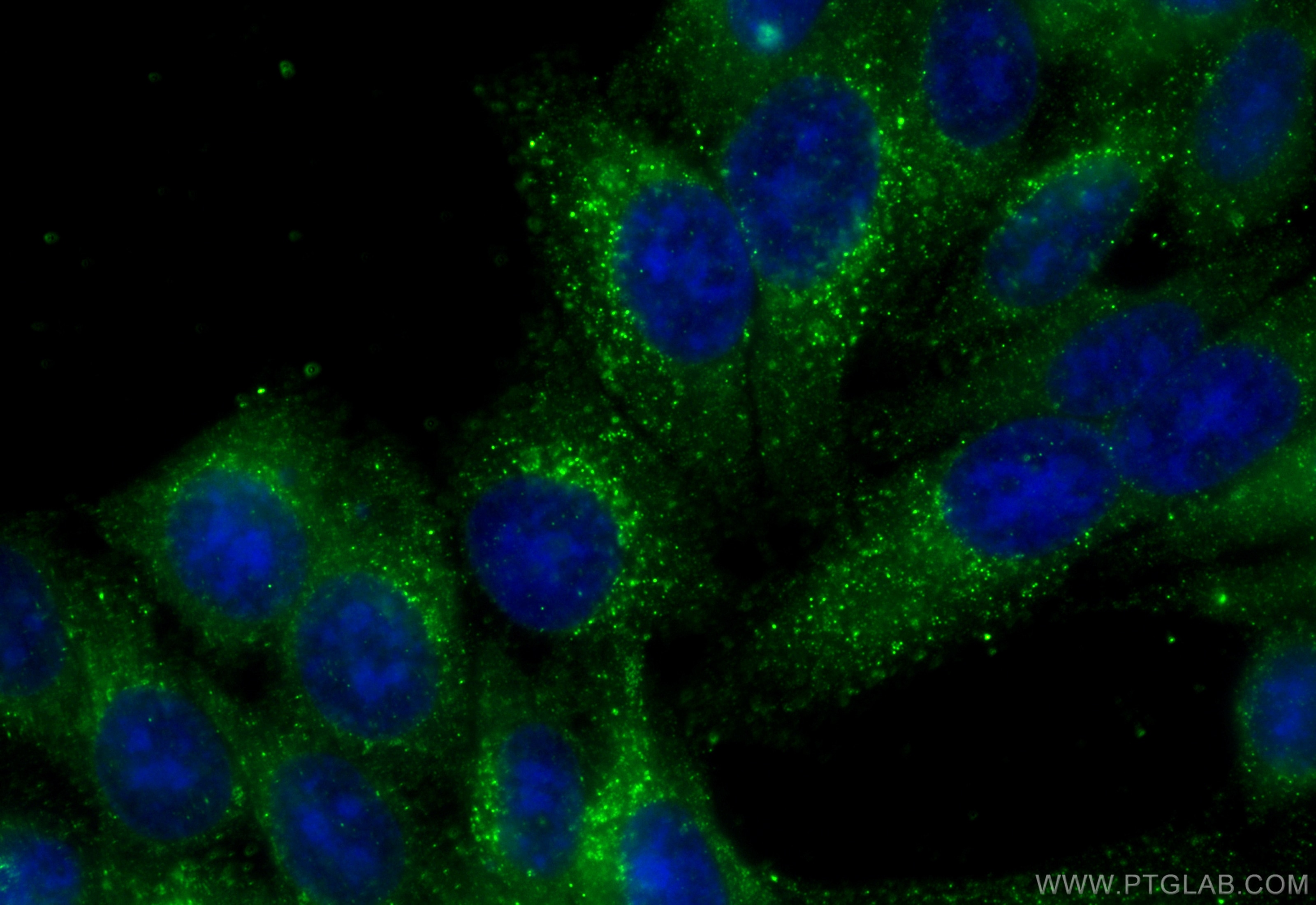- Phare
- Validé par KD/KO
Anticorps Monoclonal anti-Catalase
Catalase Monoclonal Antibody for WB, IHC, IF/ICC, Indirect ELISA
Hôte / Isotype
Mouse / IgG1
Réactivité testée
Humain, porc, rat, souris
Applications
WB, IHC, IF/ICC, Indirect ELISA
Conjugaison
Non conjugué
CloneNo.
1F8D7
N° de cat : 66765-1-PBS
Synonymes
Galerie de données de validation
Informations sur le produit
66765-1-PBS cible Catalase dans les applications de WB, IHC, IF/ICC, Indirect ELISA et montre une réactivité avec des échantillons Humain, porc, rat, souris
| Réactivité | Humain, porc, rat, souris |
| Hôte / Isotype | Mouse / IgG1 |
| Clonalité | Monoclonal |
| Type | Anticorps |
| Immunogène | Catalase Protéine recombinante Ag16916 |
| Nom complet | catalase |
| Masse moléculaire calculée | 60 kDa |
| Poids moléculaire observé | 60 kDa |
| Numéro d’acquisition GenBank | BC112219 |
| Symbole du gène | Catalase |
| Identification du gène (NCBI) | 847 |
| Conjugaison | Non conjugué |
| Forme | Liquide |
| Méthode de purification | Purification par protéine G |
| Tampon de stockage | PBS only |
| Conditions de stockage | Store at -80°C. 20ul contiennent 0,1% de BSA. |
Informations générales
Catalase belongs to the catalase family. CAT occurs in almost all aerobically respiring organisms and serves to protect cells from the toxic effects of hydrogen peroxide. CAT promotes the growth of cells including T-cells, B-cells, myeloid leukemia cells, melanoma cells, mastocytoma cells, and normal and transformed fibroblast cells. CAT catalyzes the reaction: 2 H2O2 = O2 + 2 H2O. Defects in CAT are the cause of acatalasia (ACATLAS) which is also known as acatalasemia.
